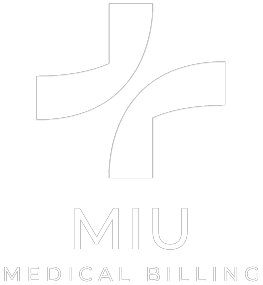Place of Service Code 21 in Medical Billing
In the complex world of medical billing, a lot of expert work and knowledge go into making sure the entire process is smooth and there are prompt insurance reimbursements. With time, a lot of things have evolved, and there are updates every now and then; hence, it’s important for a medical coder, medical biller, and healthcare provider to be aware of them.
This blog is going to be about one of the key components of medical billing known as Place of Service (POS), and we’ll cover one of these POS codes in depth, which is POS code 21. Every POS code has a meaning, an indication of when and where to use it, and how it would affect the claim. Let’s take a deep dive into POS 21 to thoroughly understand its intricacies.
What exactly is the Place of Service Code (POS)?

To make billing easy, a lot of codes have been brought up to simplify the entire process. One such code is the place of service (POS) in medical billing. POS codes consist of two digits, and when used in claims, POS means at what kind of location or setup the medical service was rendered to the patient. These codes were proposed and maintained by the Centers for Medicare and Medicaid Services (CMS). Every kind of setup, such as an outpatient clinic, hospital, physician’s office, nursing home, or even at-home patient care, has a designated POS code.
The payment varies with different types of setups in which the healthcare service was rendered. Let’s say a hospital stay would cost a patient much more than a visit to a private office of the doctor. This is because a hospital has more facilities and a better infrastructure as compared to a private clinic. This can be documented differently in the claims; for a hospital POS code, 21 is used, and for a clinic POS code, 11 is to be mentioned. These are then interpreted by the insurance companies, and the reimbursement is made accordingly to the provider or the hospital. Any error in the POS code can cause under- or overbilling, which could also give an impression of fraud and can cause huge problems for the healthcare facility owners. This is why a high level of accuracy is required while dealing with these codes.
Place of Service Code 21—A POS code for hospitals
According to the Centers for Medicare and Medicaid, POS 21 is defined as “Inpatient Hospital—A facility, other than a psychiatric facility, that primarily provides diagnostic, therapeutic (both surgical and non-surgical), and rehabilitation services by, or under, the supervision of physicians to patients admitted for a variety of medical conditions.”
In other words, wherever POS 21 is mentioned, it refers to a hospital, and in claims, it means that the patient received the healthcare service by being admitted as an inpatient by the healthcare provider at a hospital. Inpatient means that the patient has to stay in the hospital under observation for at least a day, i.e., 24 hours.
The Impact of POS 21 and Why It Matters in Medical Billing?
1. Reimbursement Rates
Different factors are taken into account when a healthcare service is rendered. One such factor is the type of location or environment the service was rendered, which is indicated by the POS codes. This also influences the reimbursement. Like previously mentioned above, reimbursement for physician private clinics (POS 11) and for an inpatient hospital (POS 21) will be different.
Hospitals are usually very well equipped with the highest quality and advanced technology equipment. Healthcare in a hospital usually costs more due to the time spent there and also benefiting from the hospital facilities. This detail is crucial to be mentioned in the claim, whether the patient was in a hospital or not, so the insurers can adjust the payments. Most of the time, the reimbursement for hospital services is much higher. If not correctly mentioned, the hospital or the providers can be underpaid, and this could cause financial damage to the organization.
2. Allows Proper Resource Distribution
Through POS codes, the national insurance payers can keep track of the money that is paid, and the POS code 21 allows them to adequately monitor how the resources are utilized in the hospital.
3. Compliance and Audit Risk
Improper use of POS codes is a red flag during payer audits. Coding a claim with POS 21 when the patient was not formally admitted may lead to claim denials, repayments, and even fraud investigations if the misuse is systematic or egregious.
Indications of POS 21
The main indication is that the patient should be officially admitted to the hospital. These are some, if not all, of the common indications of when to use POS code 21 in medical billing.
- For anyone to undergo surgery, they have to be admitted to the hospital for pre- and post-op care. All the services other than the surgery, such as anesthesiologist services, should also be noted with POS 21.
- If a patient comes to the emergency room due to any accident or serious health condition, they are shifted to an inpatient hospital for being under observation. All the services rendered during that stay would be considered under the POS 21 code.
- Life can strike a person with an acute illness at any time. For such conditions, sometimes IV antibiotics or any healthcare service, such as respiratory therapy, is needed in a hospital setting, along with strict monitoring. All the services the patient receives at that time are billed under POS 21.
Important Documentation for Claims under POS 21

To properly use the POS code 21, it is essential to document everything correctly and comprehensively. The details that you should include are
- The diagnosis for which the patient’s admission is justified
- The date and time of the patient’s admission
- Physician notes and orders for the admitted patient
- The necessary medical support the patient receives while admitted, and why they were rendered.
- The discharge summary consists of all the details of the inpatient’s stay in a summarized form.
All these details support the claims that are under the code POS 21 and avoid any ambiguity that the insurance companies may have.
Other common POS codes used in medical billing
Just like POS 21 means an inpatient hospital, there are as many as 50 POS codes, all referring to a unique location in which a healthcare service can be provided. Here are some of the common POS codes and what they mean.
- POS 22: This refers to the on-campus hospital outpatient. It is used for patients who are not formally admitted to the hospital but visit the outpatient clinic on the hospital campus. Mostly, it is used for services such as consultations, minor procedures, and diagnostic imaging.
- POS 23: This code is used in emergency cases where a patient lands in an ER for immediate attention but is not admitted afterwards. In case of a patient getting admitted to the hospital, the code should be changed from POS 23 to POS 21.
- POS 11: For services rendered in a physician-owned outpatient setting, POS code 11 is used. This is often when a patient goes for routine checkups and follow-ups. The reimbursement rates are much lower than in hospital settings.
- POS 31: For skilled nursing facilities, POS code 31 is used. This consists of services for rehab or long-term health conditions.
Common Errors while using POS 21
It’s not uncommon for even the most experienced billers to make mistakes in medical billing while using the code POS 21. Some of the potential common errors are
- Billing observation patients under POS 21 when it should be billed under the code POS 22
- Sometimes the consultants mistakenly use POS 11 instead of POS 22, as they are just for the visit.
- If telehealth services are rendered to an inpatient, this should be looked at according to the latest updates in POS codes.
Modifiers Used With POS 21
POS can be used independently, but sometimes modifiers are required for certain cases and additional details. These are
- Modifier -59: specific procedural service
- Modifier -25: used when an individual identifiable E/M service is provided by the same provider on the same day, but another procedure is
- Modifier -95: This is used for services provided via telehealth.
Tips to Practice Accurate POS 21 Billing
For a thriving healthcare facility, you need to have a good and consistent cash flow and timely reimbursements. This is only possible if your medical billing is smooth and free of errors, even if it’s an error in the POS code. Here are some of the things you can do to practice to streamline your billing processes.
- To have a good knowledge of all of the POS codes, what they mean, and when they are used. From the front desk to physicians, everyone should at least have knowledge about what each code refers to.
- Regular audits should be done to periodically review the POS usage across the providers and service types to ensure compliance.
- Cross-referencing CPTs and ICD-10 codes can be used to ensure that the services billed under POS 21 match the codes usually associated with inpatient care.
Consequences of Incorrect Use of POS 21
When POS 21 is used in claims when it’s not supposed to, it can cause a lot of hassles for the provider. These errors can result in:
- Increased audit risk
- Damage to the healthcare setup’s reputation
- Legal actions in extreme cases
- Claim denials
- Repayment of the funds that are paid to the provider
Conclusion
To avoid problems like claim rejections, delays in reimbursements, and underpayments, a healthcare organization should have a team of experts who have up-to-date knowledge of all the POS codes and their use. This can be a life-saving investment for any healthcare setup to thrive and succeed in the long run.
POS 21 codes work like an important piece of the puzzle when it comes to billing. It greatly impacts the reimbursement and also the reputation of the healthcare setup. When used incorrectly, it can have grave consequences, such as a disrupted revenue flow and serious compliance issues for the hospital. Thus it should be used with great caution, accuracy, and without any confusion.




